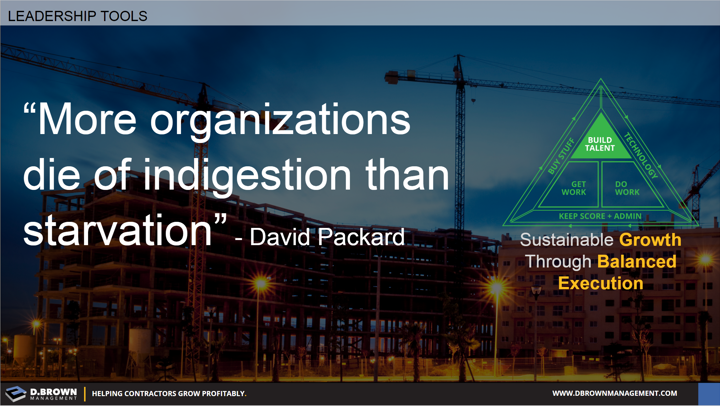Many are posting record bottom-line profits helping their balance sheets recover from the recession.
With that it is important to remember the critical observation from David Packard:
“More organizations die of indigestion than starvation”
Toyota is a very strong company with an amazingly strong culture and even they weren’t immune as they pushed their worldwide expansion a little too quickly. Toyota was far from death but they did have some operational and quality problems.
The ultimate root cause was discussed in Developing Lean Leaders at All Levels: Their rate of revenue growth outstripped the rate they could develop their leadership (talent).
Will the markets you are in today support you through the next cycle in the economy?
Do you have a predictable way to develop new business - even in a tight economy?
Are you investing enough today in building your competitive advantage for tomorrow?
How does your talent acquisition, development and retention compare to your growth rate and your competitors?

